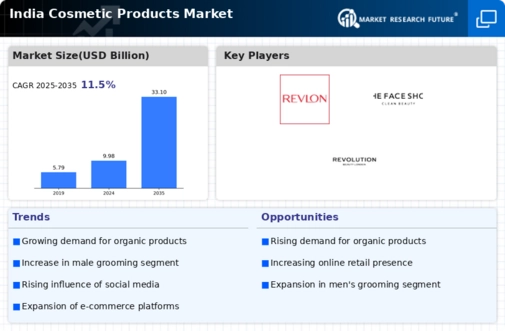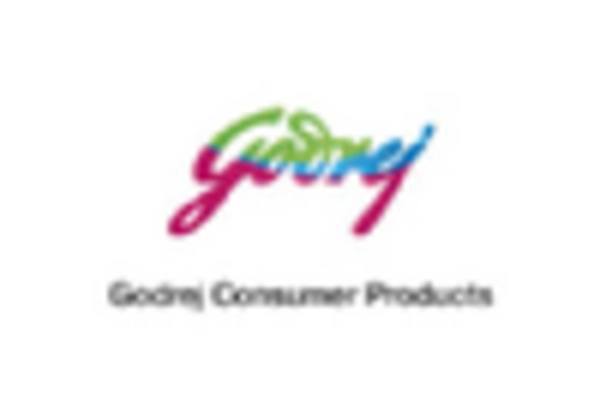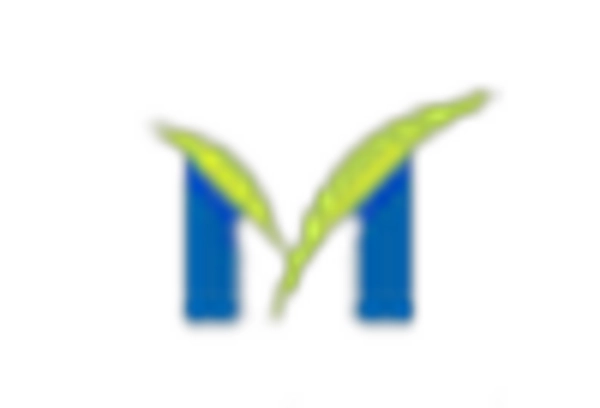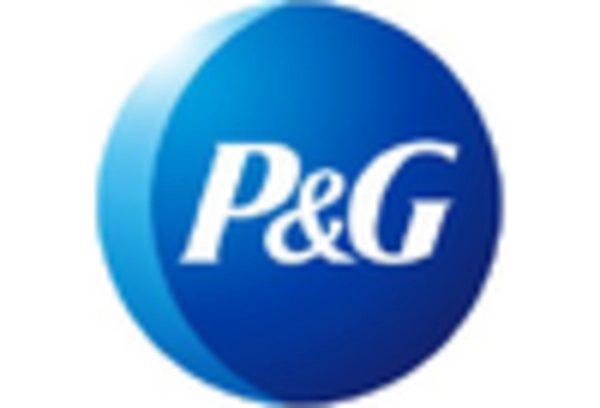Rising Disposable Income
The increasing disposable income among the Indian population is significantly impacting the cosmetic products market. As consumers have more financial resources at their disposal, they are more inclined to invest in premium and luxury cosmetic products. Reports suggest that the premium segment of the market is expected to grow by approximately 20% in the coming years. This trend is particularly evident among urban consumers, who are increasingly willing to spend on high-quality products that promise better results. The rise in disposable income is also leading to a diversification of product offerings, as brands introduce a wider range of products to cater to varying consumer preferences. This economic shift is likely to continue driving growth in the cosmetic products market, as more individuals seek to enhance their personal care routines.
Growing Demand for Organic Products
the market is witnessing a notable shift towards organic and natural formulations. Consumers are increasingly prioritizing products that are free from harmful chemicals, which has led to a surge in demand for organic cosmetics. According to recent data, the organic cosmetics segment is projected to grow at a CAGR of approximately 15% over the next five years. This trend is driven by heightened awareness regarding skin health and environmental sustainability. As a result, brands are reformulating their products to include organic ingredients, thereby enhancing their appeal in the competitive landscape of the cosmetic products market. The rise of eco-conscious consumers is likely to further propel this trend, as individuals seek products that align with their values and lifestyle choices.
Increased Focus on Men’s Grooming
The cosmetic products market in India is experiencing a notable expansion in the men’s grooming segment. Traditionally, the market has been dominated by female consumers; however, there is a growing recognition of the importance of personal grooming among men. This shift is reflected in the introduction of specialized products such as skincare, haircare, and grooming essentials tailored for men. Market analysis indicates that the men’s grooming segment is projected to grow at a CAGR of around 12% over the next few years. This trend is driven by changing societal norms and an increasing emphasis on self-care among men. As brands respond to this demand by launching targeted marketing campaigns, the cosmetic products market is likely to see a significant transformation in its consumer base.
Influence of Social Media Marketing
Social media platforms are playing a pivotal role in shaping consumer preferences within the cosmetic products market in India. Brands are leveraging platforms like Instagram and TikTok to engage with younger audiences through influencer collaborations and targeted advertising. This strategy appears to be effective, as studies indicate that nearly 70% of consumers are influenced by social media when making purchasing decisions. The visual nature of these platforms allows brands to showcase their products in innovative ways, creating a strong brand presence. Consequently, the cosmetic products market is experiencing a transformation in marketing strategies, with a focus on digital engagement and community building. This shift not only enhances brand visibility but also fosters consumer loyalty, which is essential for sustained growth in this competitive market.
Emergence of Sustainable Packaging Solutions
Sustainability is becoming a crucial consideration in the cosmetic products market in India, particularly regarding packaging. Consumers are increasingly aware of the environmental impact of plastic waste, prompting brands to adopt eco-friendly packaging solutions. This shift is reflected in the growing popularity of biodegradable and recyclable materials. Recent surveys indicate that approximately 60% of consumers prefer brands that utilize sustainable packaging. As a result, companies are innovating their packaging strategies to align with consumer expectations, which may enhance brand loyalty and market competitiveness. The emphasis on sustainability is likely to shape the future of the cosmetic products market, as brands that prioritize eco-conscious practices may gain a competitive edge in an increasingly environmentally aware consumer landscape.

















Leave a Comment